Vibe MONESS BMX is a freestyle BMX bike designed for recreational use. It features a lightweight alloy frame, front and rear V-brakes, and high-performance tires. The bike is suitable for riders weighing less than 115 kg (254 lb) and is not intended for competitive cycling, stunting, jumping, or acrobatic maneuvers. It comes with pegs for added stability and control during tricks and maneuvers. The bike is also equipped with a padded saddle for comfort during extended rides.
Vibe MONESS BMX is a freestyle BMX bike designed for recreational use. It features a lightweight alloy frame, front and rear V-brakes, and high-performance tires. The bike is suitable for riders weighing less than 115 kg (254 lb) and is not intended for competitive cycling, stunting, jumping, or acrobatic maneuvers. It comes with pegs for added stability and control during tricks and maneuvers. The bike is also equipped with a padded saddle for comfort during extended rides.

















-
 1
1
-
 2
2
-
 3
3
-
 4
4
-
 5
5
-
 6
6
-
 7
7
-
 8
8
-
 9
9
-
 10
10
-
 11
11
-
 12
12
-
 13
13
-
 14
14
-
 15
15
-
 16
16
-
 17
17
Vibe MONESS BMX User manual
- Type
- User manual
- This manual is also suitable for
Vibe MONESS BMX is a freestyle BMX bike designed for recreational use. It features a lightweight alloy frame, front and rear V-brakes, and high-performance tires. The bike is suitable for riders weighing less than 115 kg (254 lb) and is not intended for competitive cycling, stunting, jumping, or acrobatic maneuvers. It comes with pegs for added stability and control during tricks and maneuvers. The bike is also equipped with a padded saddle for comfort during extended rides.
Ask a question and I''ll find the answer in the document
Finding information in a document is now easier with AI
Related papers
Other documents
-
Argos TBC User manual
-
Huffy 20 Inch Kids Bike User manual
-
Huffy 20 Inch Kids Bike User manual
-
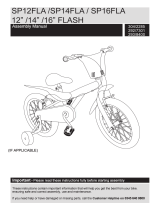 Spike 14IN FLASH BOYS BIKE MOTO User manual
Spike 14IN FLASH BOYS BIKE MOTO User manual
-
Huffy KD15HUF User manual
-
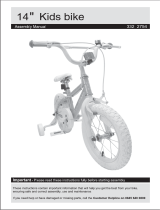 Fairies 14 Inch Kids Bike User manual
Fairies 14 Inch Kids Bike User manual
-
Eclipse 18 Inch Kids Bike User manual
-
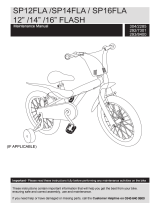 Spike 12 Inch Kids Bike User manual
Spike 12 Inch Kids Bike User manual
-
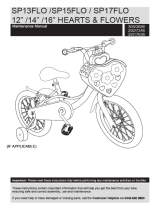 Spike SP14FLA User manual
Spike SP14FLA User manual
-
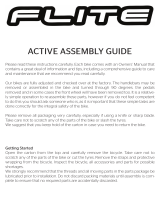 Flite Active User manual
Flite Active User manual





















